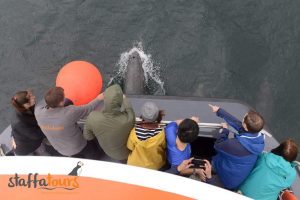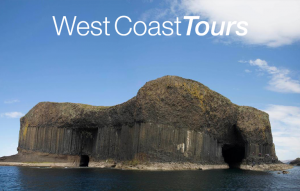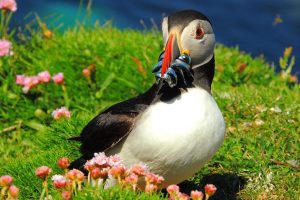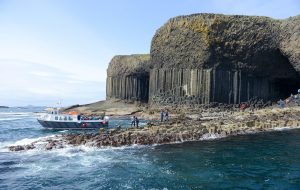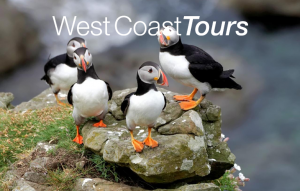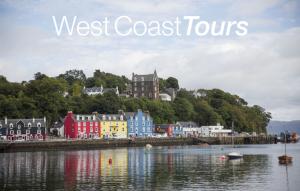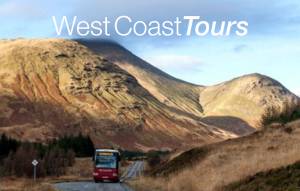Staffa & Fingals Cave Treshnish Wildlife Tour (Sails from August)
-
Departs:
Tobermory, Ardnamurchan
- 4 hours
£ 60
Staffa and Treshnish Isles Wildlife Tour from Fionnphort or Iona
-
Departs:
Iona, Fionnphort
- 6 hours
£ 85
ABOUT ISLE OF MULL
Beautiful beaches and bays abound, from Calgary and Kilninian in the north to Loch Buie and Carsaig in the south. Mull has an abundance of wildlife on its land and in its waters, with curious puffins on surrounding seabird colonies and great whales and basking sharks swimming just off the coast. There are guided boat trips to the neighbouring islands, includingthe Isle of Iona and Staffa.
HISTORY
Perhaps the most famous sight on Mull’s coast is Duart Castle, home of the Chief of Clan Maclean. In its commanding position on a promontory on the south east of the island, it evokes the history of the highlands and its people.
Duart has had a stormy past. Built in the 13th century, its 14ft thick Keep walls with mounted cannons posed a significant defence and offence against enemies. However, in 1691 it was sacked by the Duke of Argyll, and after Clan Maclean’s support of the Stuarts in 1715 and 1745 the castle was left in ruins until 1912, when it was restored by the present chief’s great-grandfather.
Lady Rock, the tiny reef between the Lismore lighthouse and the Mull shore, was the scene of a famous attempted murder by one of the chiefs of Clan Maclean, who inhabited Duart Castle on the promontory opposite. He bound up and left his wife to drown on rocks that he knew would be flooded by the incoming tide.
However, unbeknown to Maclean, she was rescued by passing fishermen and taken to her father, a great nobleman. When Maclean went to his father-in-law’s castle to tell him the sad news, she was presented to him alive and well. Shortly afterwards Maclean himself suffered a violent death. The island’s romantic atmosphere fosters countless stories such as this, many endowed with a kernel of truth.
WILDLIFE
All over Mull there are regular sightings of species such as white tailed sea eagle, golden eagle, diver, merlin, peregrine, buzzard, hen harrier, plover, raven and woodland birds like goldcrest, warbler and tree creeper. Most of the raptors live on the sea cliffs on the west of Mull, but some are also spotted inland on the hills and moorlands with Ben More, Mull’s highest mountain, being home to golden eagle and peregrine.
On the coast and shorelines live red throated and great northern divers, eider, merganser, as well as more recognised species such as shag, cormorant, oystercatcher, tern, kittiwake and common gull, while some of the larger sea lochs attract razorbill and the ever-popular gannet.
The shallow and deep waters around Mull’s coastline are clear and rich in nutrients which naturally attracts a great variety of sea mammals, a great attraction for Mull’s tourism. Whales, dolphins and porpoises provide the main attractions especially from onboard a boat as they are often seen at close quarters rising to the surface, the sometimes acrobatic dolphins in particular. In addition, during the summer months, the mysterious basking shark returns, their massive fins visible of course by boat but also regularly from the shore.
Sea otters inhabit the rocky, seaweedy coastal areas but are often elusive and hard to spot, surprising considering that Mull has one of the UK’s densest otter populations.
Mull’s diverse terrain of narrow, sheltered glens and rolling, open moorland provides the perfect habitat for some of the UK’s favourite as well as rarest wild animals. The heathery moorlands and steep hill and mountain sides are roamed by magnificent red deer, feral goat and mountain hare. Further down in secluded glens, among the woodland, rabbits and stoats are plentiful, but the careful observer may also be lucky enough to glimpse polecat, and by rivers and lochs the seldom seen mink.
Tobermory
Tobermory has become the heart of the Isle of Mull since it was purposely built as a fishing port in 1788; as designed by the Dumfriesshire engineer Thomas Telford.
The renowned ‘post-card perfect’ harbour of brightly coloured buildings, attributable to the popular BBC children’s programme ‘Balamory’, host welcoming accommodation, popular gift shops and a plentiful choice of delicious eateries; making it a desirable visiting location for all of the family.
Tobermory can also be known for its popular Whisky distillery, pottery workshop, locally sourced fish and shell-food restaurants, Isle of Mull cheese farm, and the historical wreck of a Spanish Galleon sunk in the bay during the Armada of 1588. A number of television and radio broadcasts feature Tobermory for its idyllic character and attractions, as well as excellent public transport links and free parking.
The town is recently more admirable for catching a glimpse of iconic wildlife species; from Golden and White-tailed Eagles and other marine birds soaring the skies to Otters, Dolphins and Porpoise swimming in the harbour.
Tobermory harbour makes for the ideal destination to enjoy and depart from to explore the magnificent coasts, which are significant feeding grounds of Basking Sharks, Minke Whale’s, Orca’s and less rarely sighted sea life such as the Sunfish and Leatherback Turtle! It is the perfect base for exploring the west coast of Scotland’s islands and marine life by sea; with the newly purpose built ‘MV Islander’ being the first to provide an opportunity to visit, via Kilchoan, Coll, Staffa and the Treshnish Isles from Tobermory.
The Sights
Craignure and Torosay Castle
Certainly the approach to Craignure pier is dramatic, the slopes of Dun da Ghaoithe (2,512 ft) dwarfing the sheltered, richly wooded bay. Opposite Craignure village is the mouth of Loch Linnhe, which extends north-eastwards for more that forty miles, its upper reach overlooked by the highest mountain in Great Britain – Ben Nevis at 4,406 ft. On a clear day the mountain’s massive shape can be seen from many places on the east coast of Mull.
Leaving the jetty at Craignure, turn westwards to take the romantic road that strikes across southern Mull to Iona in the extreme west. A little more than a mile out of the village is Torosay Castle, an imposing Victorian building set in beautiful grounds. Both the castle and its grounds are open to visitors who may care to travel the short distance from Craignure jetty by steam railway.
A little further on from Craignure is the turning that leads to Duart Castle, home of the Chief of Clan Maclean. Its commanding position, as well as the aura of history that radiates from it, attracts many visitors to its doors. The thirteenth century keep has walls 14 ft thick, and the cannon mounted on them commanded the passage of the Sound of Mull at its narrowest point.
Duart is open to the public in the summer months and many fascinating relics of the clan’s history are on display, as well as a famous exhibition of Scouting.
